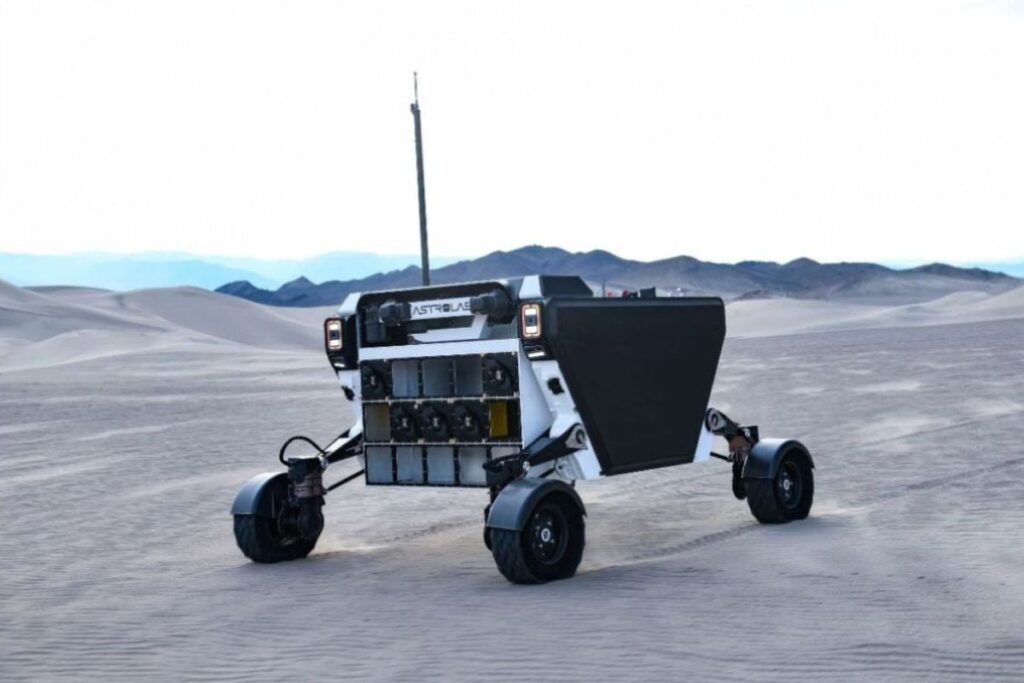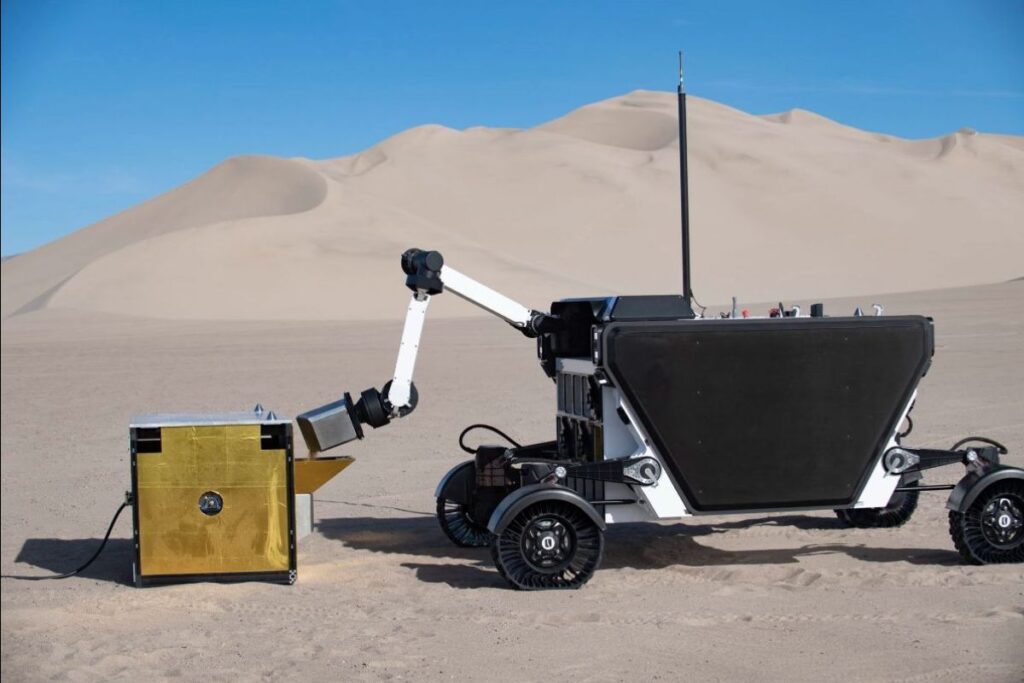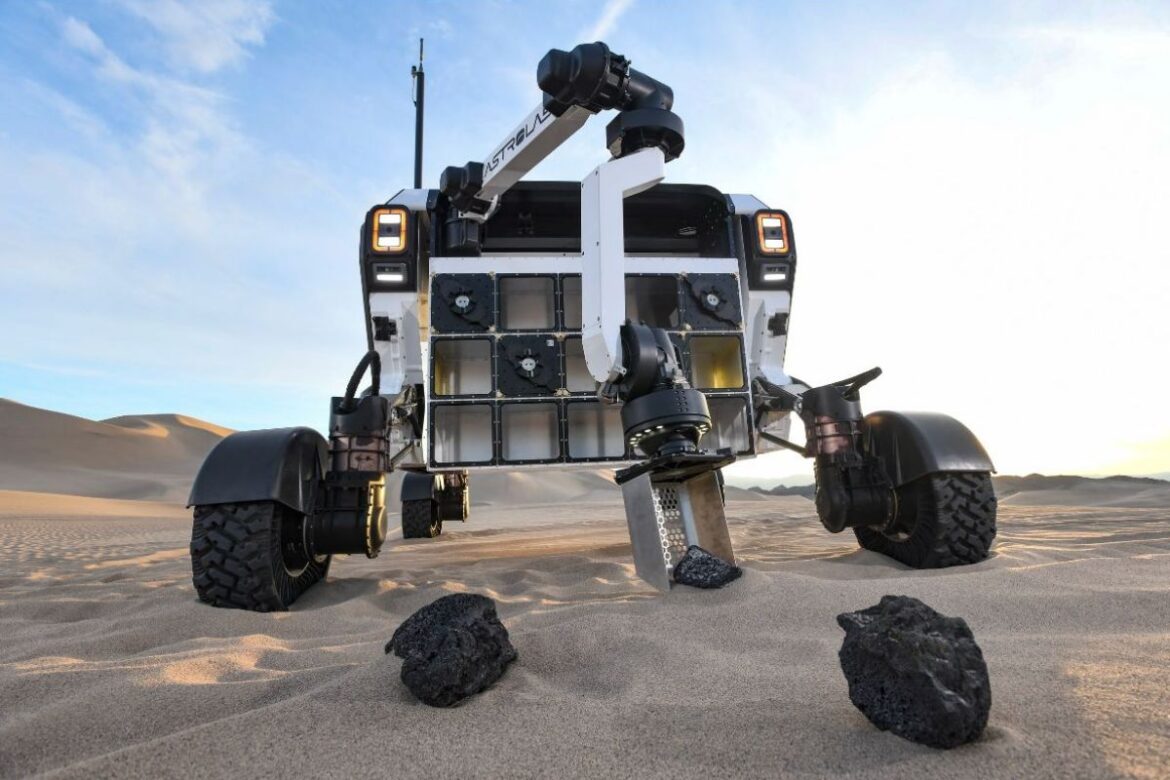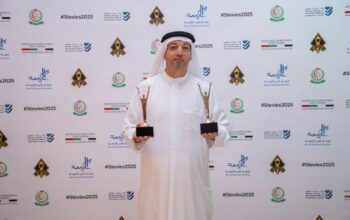

| Monaco, 31 March 2023In three years’ time, the Monegasque Venturi Group will write the most impressive page in its history: in 2026, the FLEX (Flexible Logistics and Exploration) rover, the result of an international collaboration (see below), will head for the Moon. The American company SpaceX will be responsible for transporting the rover, which will be the largest and most capable in the history of lunar vehicles. SpaceX will use its Starship launch and landing system to transport FLEX to the lunar surface. |
| HISTORY AND PROGRAMME It was in 2019, under the impetus of Venturi Group’s President, Gildo Pastor, that the electric lunar rover programme was imagined and then put in place. A Swiss entity, Venturi Lab S.A., was created. At the same time, a strategic partnership was created with an American-owned company based in Los Angeles (Hawthorne), Venturi Astrolab, Inc (Astrolab). Astrolab and Venturi Lab work with Venturi Group’s historic base in Monaco. Together, the three companies are designing, developing and building the FLEX rover. As early as 2026, FLEX – deposited by the Starship launch and landing system on the surface of the moon – will become operational. It will demonstrate its efficiency, viability and capacity to conduct scientific experiments and commercial activities. |
| STRUCTURE AND EXPERTISE The collective team includes engineers and scientists from the fields of space mobility, terrestrial and planetary robotics, industry, development, advanced technology research, electromobility, fuel cells and batteries, hydrogen storage, composite materials and processes manufacturing. Each company provides the following expertise: – Venturi Group in Monaco is dedicated to high performance batteries. In this, it is accompanied for the test phases by its US subsidiary, Venturi North America (Ohio, USA). This branch is located at Ohio State University and works closely with its mechanical engineering students. – Venturi Lab creates materials resistant to extreme conditions (low temperatures and radiation), high-performance solar panels, deformable wheels and electrical control systems. It also manages relations with ESA. – Venturi Astrolab designs the vehicle architecture, its primary structure & mechanisms, develops its software and avionics, assembles it, and conducts validation testing. The rover’s human factors and aesthetic design have been informed and inspired by designer Sacha Lakic. Lakic has a long history of collaborating on the design of Venturi Group’s innovative vehicles. |
| CHALLENGES AND DEVELOPMENT The harsh lunar environment imposes a multitude of challenges for the system. For example, FLEX must be reliable over the very long term, withstand temperatures of between -90°C and -230°C, resist radiation and be able to operate for a fortnight in the darkness of the South Pole of the Moon. There is also the constraint of the vehicle’s control modes. The rover will have to be able to traverse semi-autonomously, be piloted by the astronauts on board, be commanded from the future station in lunar orbit, and also from Earth. |
| FOCUS ON VENTURI LAB Venturi Lab was co-founded in 2021 by Gildo Pastor and Dr. Antonio Delfino in Corminboeuf, in the Canton of Fribourg (Switzerland). The team is made up of experienced and passionate engineers, chemists and physicists who hold over 250 accumulated patents in the fields of electromobility, fuel cells, materials science, composite materials, processes, software engineering, computer science, space mobility and polymer science. Each engineer has over 20 years of experience in applied technology. Together they design and build new space mobility components and materials, resilient to the extreme environmental conditions of the Moon and Mars. |
| “Over the past two decades the Venturi Group has developed some truly unique, high performance electric vehicles. The time has come to go further and put the Venturi Group in the history books. We are proud to be a strategic partner of Venturi Astrolab in its work in designing and developing the FLEX rover. Upon completion of this mission, the FLEX rover will be the largest and most capable rover ever to travel to the Moon. This is an extraordinary achievement and one that is a highlight of my professional life, a life that has always been characterized by innovation, adventure and the realization of dreams I was told were impossible to fulfill. As important as this milestone is, I know it’s just the first of many that Venturi and Astrolab will achieve.” Gildo Pastor, President of the Venturi Group and co-founder of Venturi Lab |
| « With this agreement between Venturi Astrolab and SpaceX, we are taking a decisive step forward, as we enter the phase of concretization and qualification of our space technologies: Venturi Astrolab’s rover will indeed be on the Moon in three years. Together with passion and determination, we will tackle the remaining technological challenges in preparation for launch in 2026 ». Antonio Delfino – Director & co-founder of Venturi Lab and Member of the Venturi Astrolab Advisory Board |
| “We have created much more than a rover for use on the Moon or Mars. FLEX is a logistics system capable of handling a wide variety of cargo. We believe that this approach will enable a permanent lunar outpost to be established on the Moon at a lower cost and in less time than expected. We are delighted that this contract with SpaceX will allow Venturi Astrolab to demonstrate the benefits of the FLEX rover and its modular payload system.” Jaret Matthews, founder and CEO of Venturi Astrolab |








